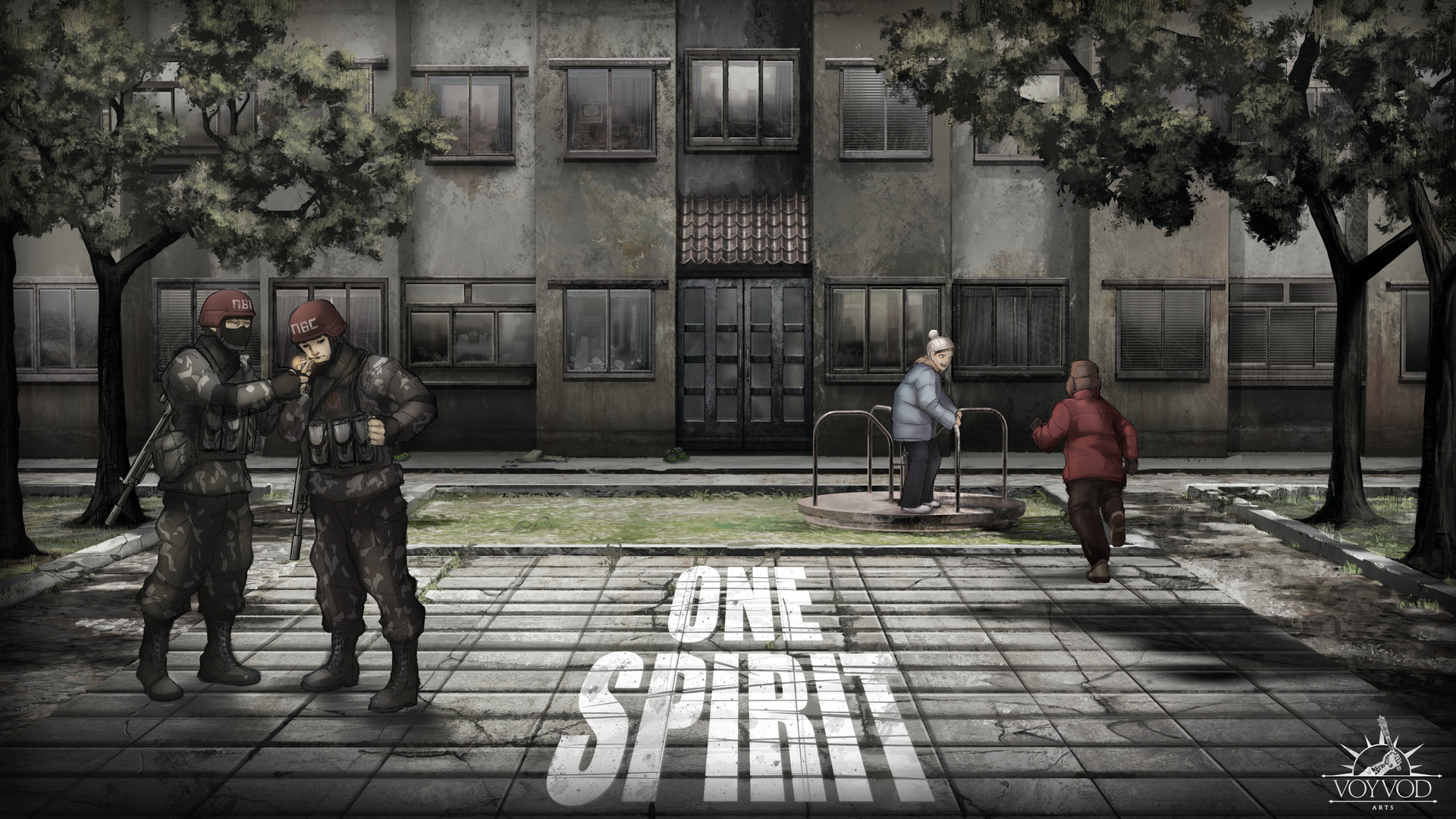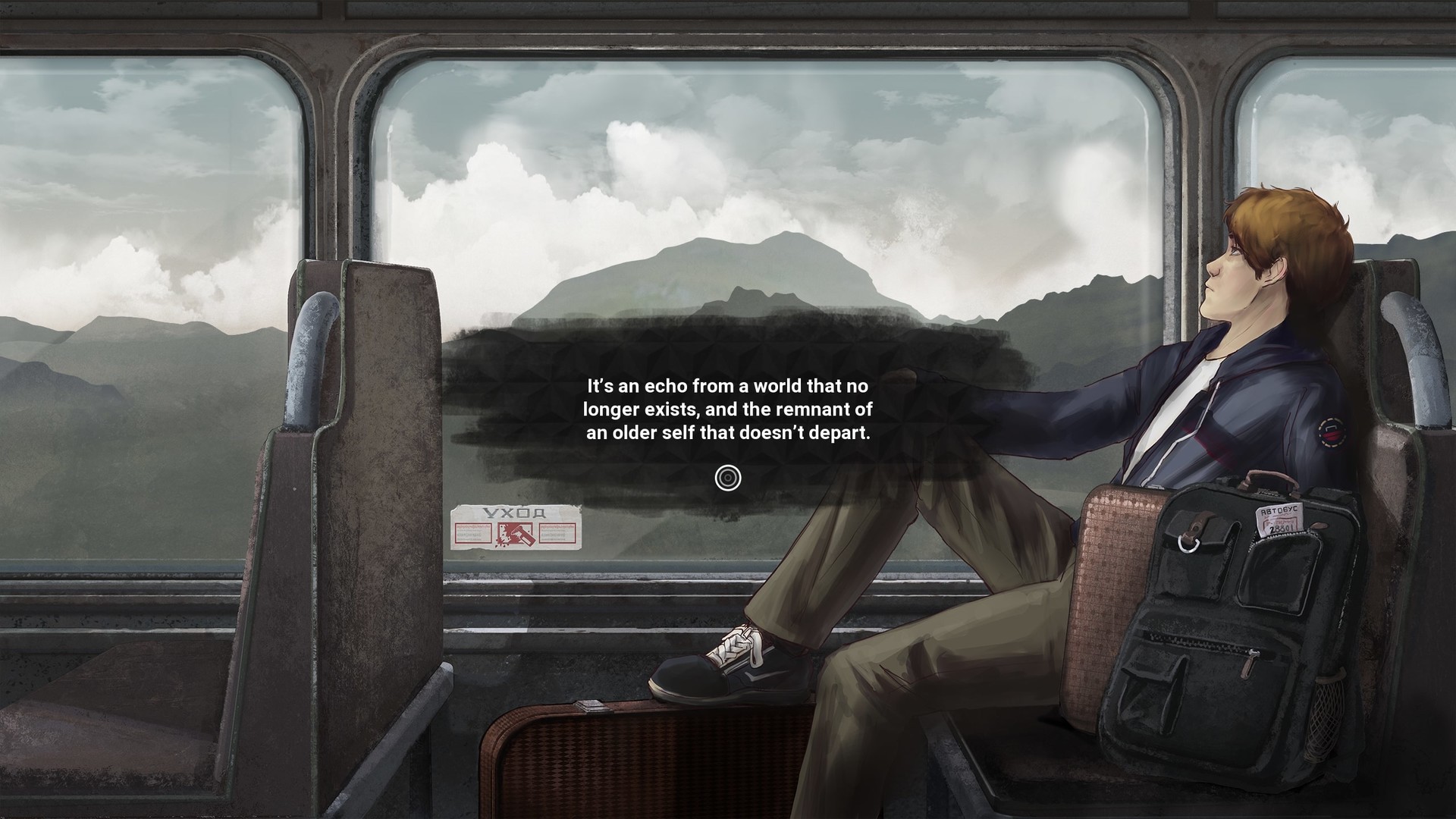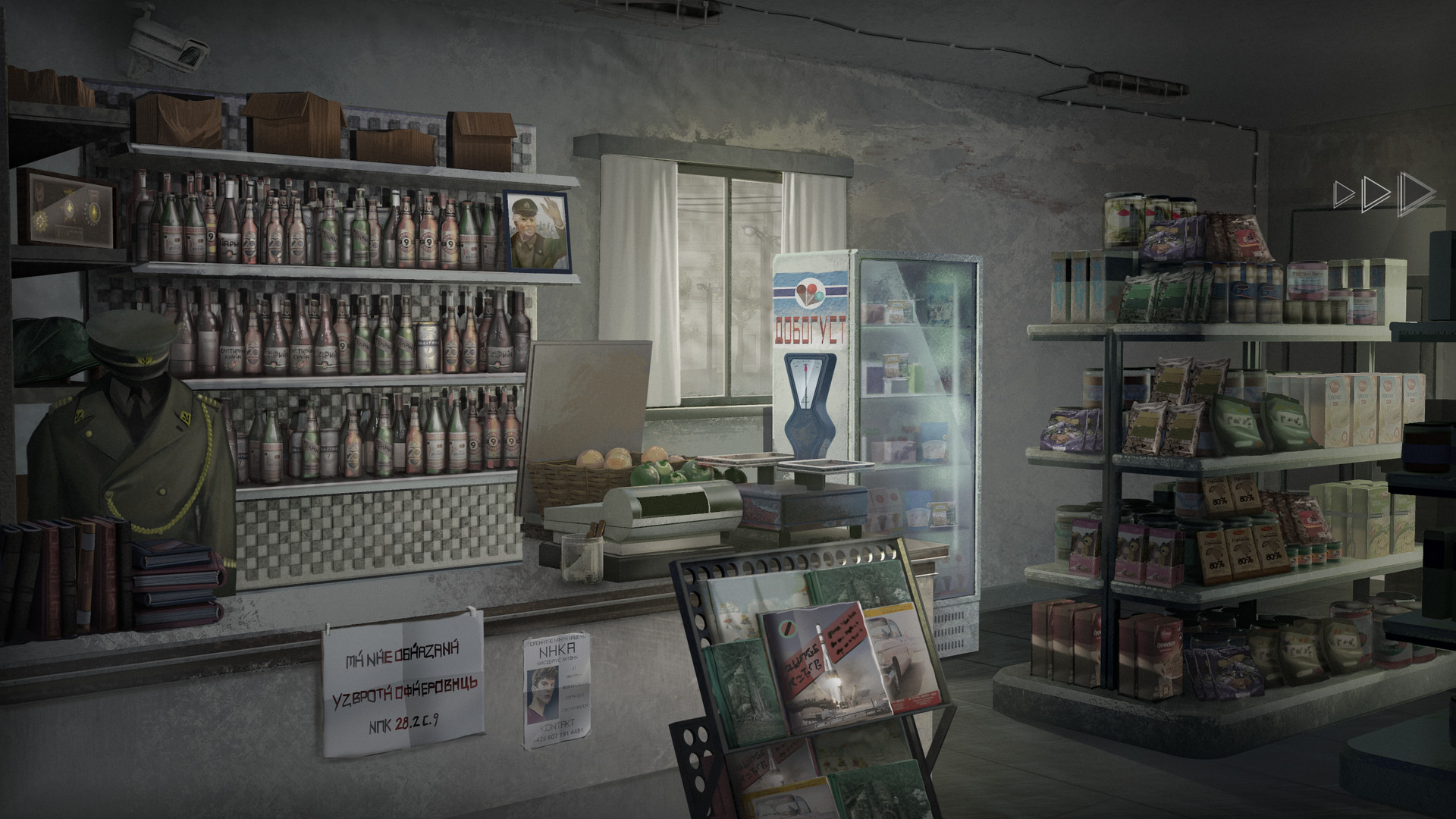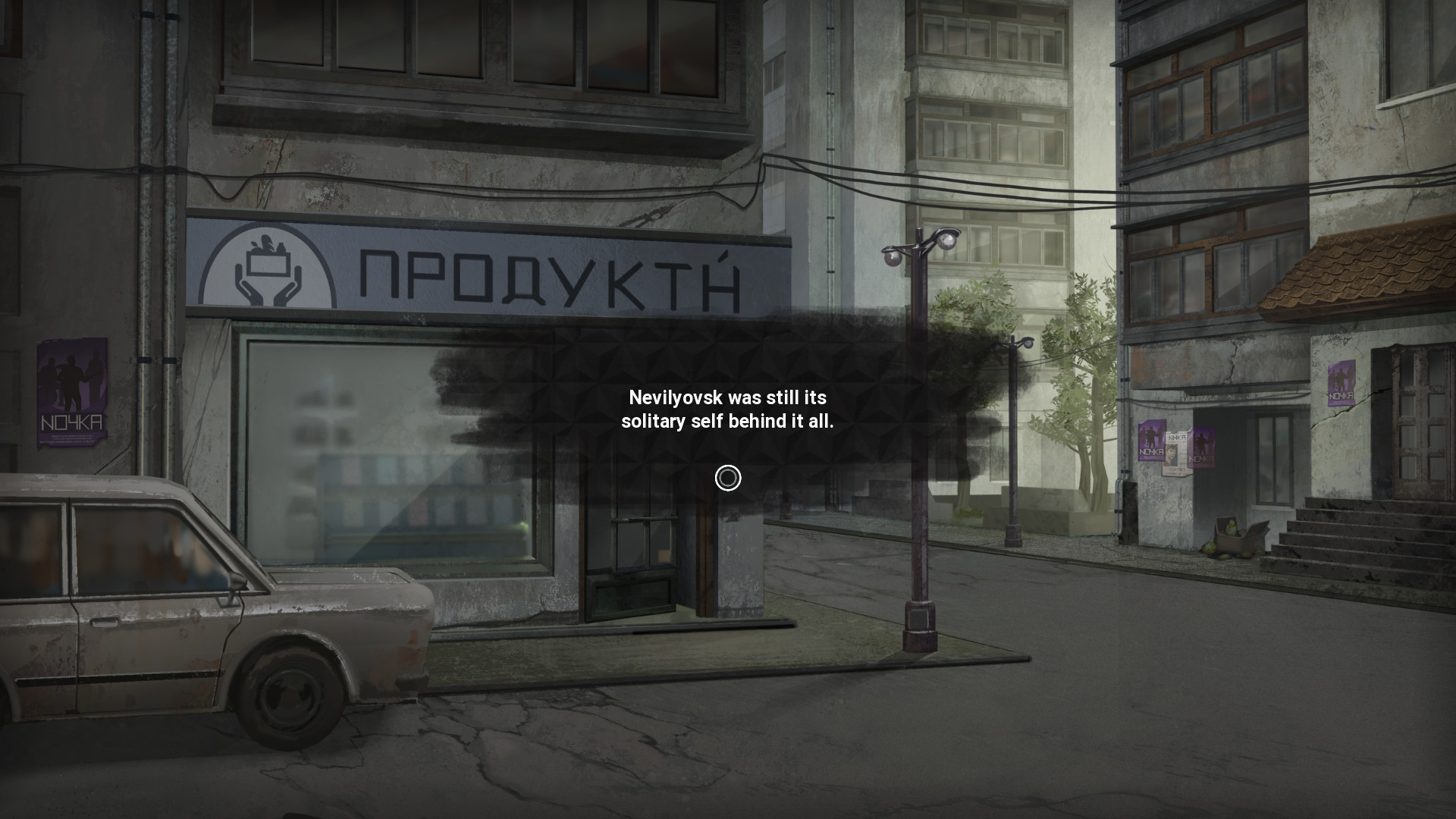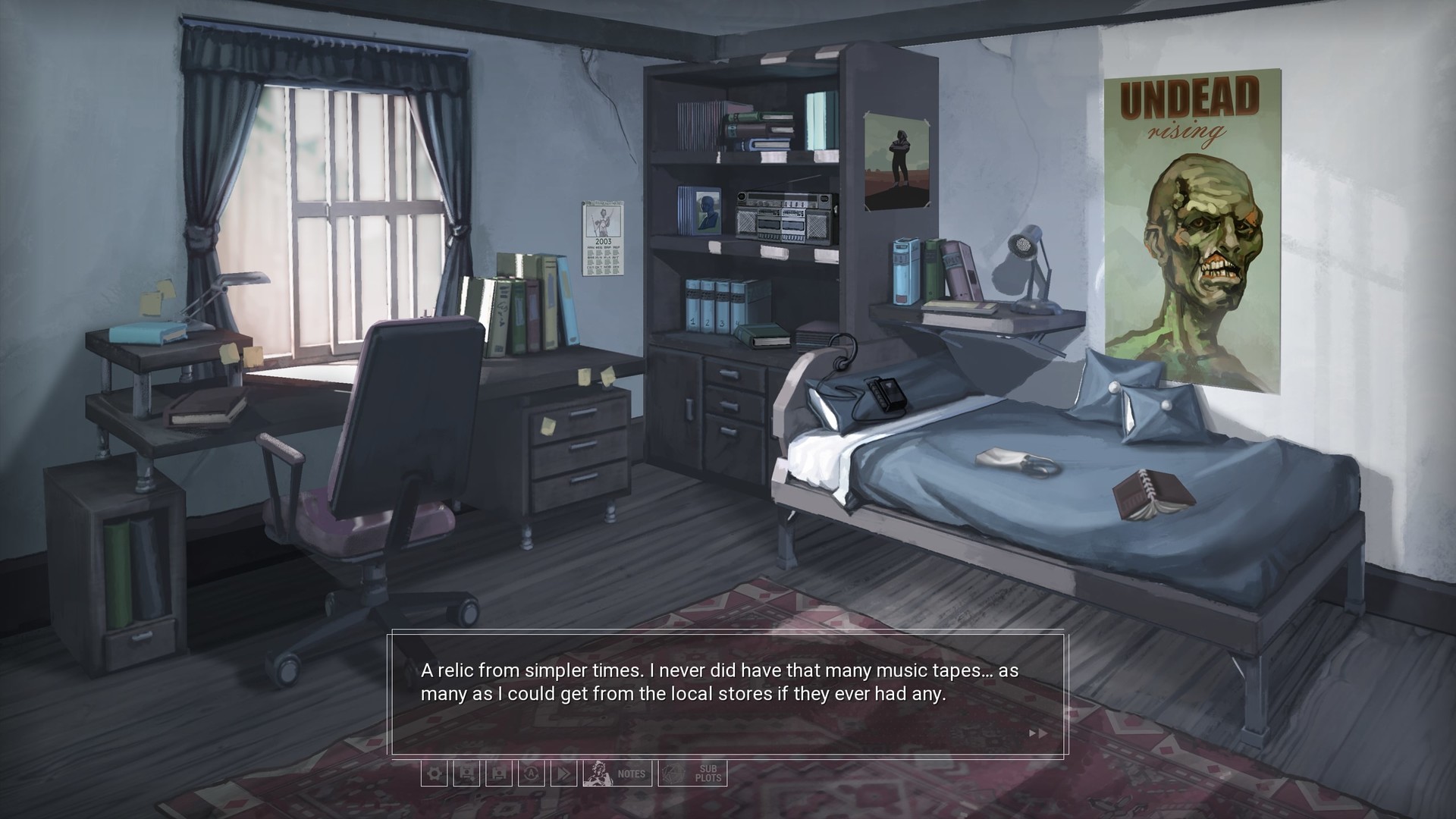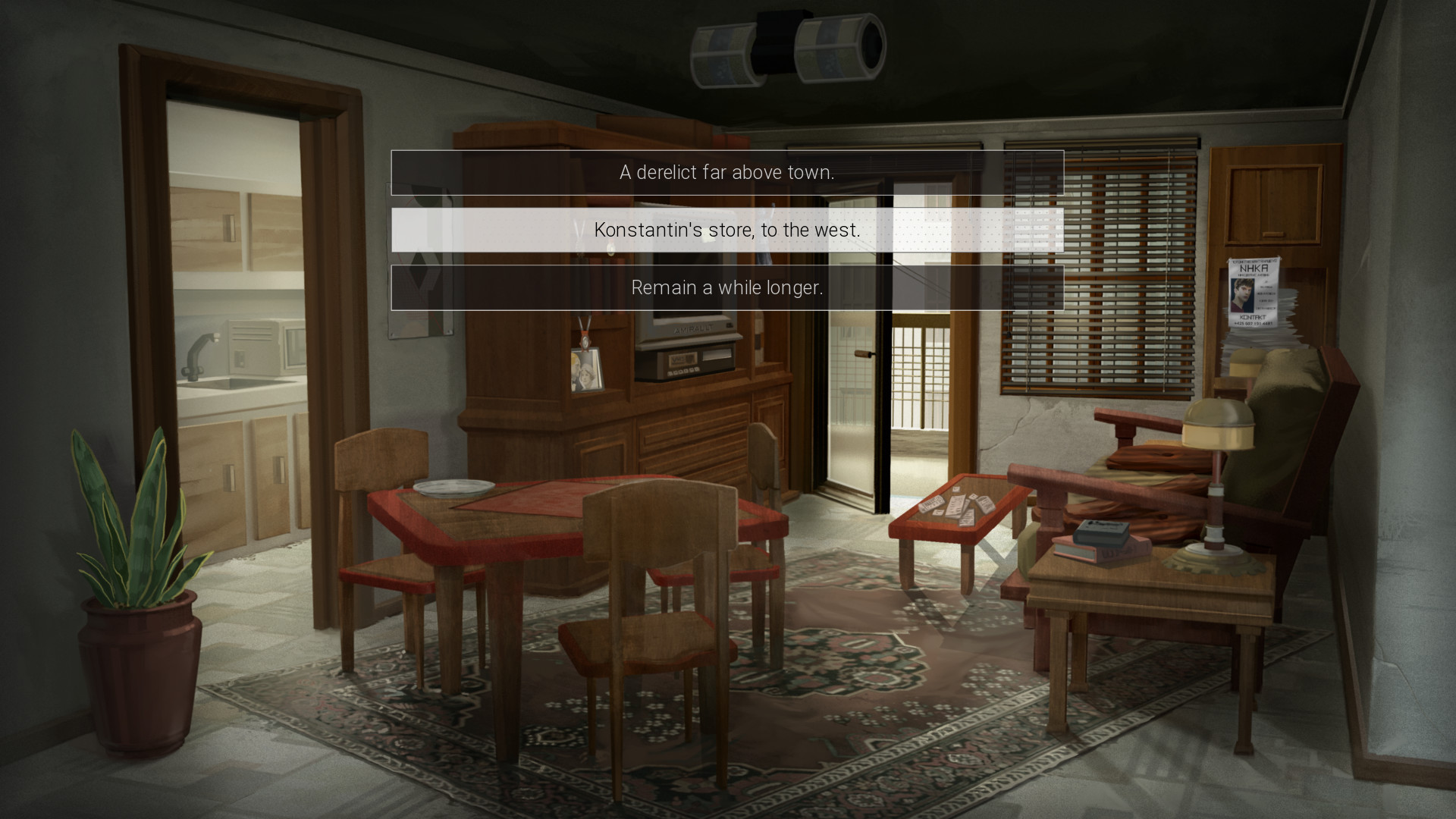
One Spirit is a coming-of-age visual novel set in an alternate timeline where the Cold War drags on into the 21st century. Exploring various political, cultural and philosophical themes, the game presents an engaging, thought-provoking thriller through the eyes of its everyday characters, their struggles and hopes.
In 2003, the Iron Curtain stands tall. The superpowers of the new age wage a silent war through the means of information, economy, culture and proxy. As the Cold War slows to a crawl, the Republic of Sysica, a Western satellite state in Eastern Europe, finds itself on the verge of political death as violence, misery and war loom over its head.
One Spirit follows Yuri Danilin, an 18-year-old young man disenchanted with life, as he returns to his modest hometown in Nevilyovsk, Eastern Sysica. Having failed in his studies at the capital, he reunites with his sister knowing their time apart has changed both permanently. When news of a known local activist disappearing spread through the town, Yuri soon finds himself at the center of a dangerous game of truths.
KEY FEATURES
- Uncover a deep and engaging story, set in an original world where the Iron Curtain hasn't fallen, inspired by real events and reflections on them: experience the bleak feel of a war too long fought.
- See the world through the eyes of an alienated youth — casual but complex personalities set in a path of self-discovery and self-affirmation in a world that has robbed them of a future.
- Delve into six different subplots branching from the main story.
- Every subplot has a unique dynamic you engage with by making choices, efforts and sacrifices. Subplots develop a wide variety of topics stemming from Yuri's fatal years of 2003 and 2004, from the intimacies of friendship to the secrecies of Sysica's ideological underground.
- Decide carefully how to spend your time in Nevilyovsk: days are a limited resource. Your priorities and preferences will increasingly mark your journey.
- Enjoy high choice responsiveness, as the game's slightest details react to your smallest choices.
- Explore over 30 different environments to reveal new details, points of view and events.
- Take part in a philosophical journey about human history, society, struggle and life, with roots in contemporary critical theory, psychoanalysis and existentialism, among other similar and dissident traditions.
- Dive into this grey world through a high-quality art style that evokes the melancholic, nostalgic feel of post-socialist Sysica.
- Explore hours upon hours of worldbuilding detail: a unique Slavic theme, a constructed language, a simulated history and a culture imagined from the ground up.
One Spirit's demo, or its extended version to be released after a potential successful Kickstarter, are relatively linear in that they allow for detours, minor choices and, of course, the classic mechanic of unlocking new dialogue/narrative options through interacting with the world or having relevant conversations. While this is effective at preventing OSP from becoming a kinetic novel, it does not allow the level of choice we'd like for a more complete game, where dozens of environments, plenty of characters and a far larger story unfold. Soon enough, we'll be backing all these ideas with prototype visuals, especially so for our crowdfunding campaign.
Subplots, not Routes
For One Spirit's full release, the backbone of the game will itself be the main plot, labelled in-game THE SECRET SYSICA, about the disappearance of local activist Nicodemus Litvin and Yuri's role in a tightening game of secrets.
Running parallel to it, there are a series of storylines one can freely engage with, triggering optional content that more often than not will radically affect the course of the main storyline. In this sense, it takes more shape through the subplots than it does "by itself", meaning the player can and will be encouraged to go for optional events and push for certain developments., and the influence of these events (even if attempted to be left "untouched") will be palpable. There is no escape from leaving a mark on the world.
However, subplots are not exactly "routes" as we often call them: that is, branching paths that reach from A to B, which eventually lead up to a concrete ending, which present themselves as roughly equal, interestng options, and which usually remain contained within themselves (or, at most, excluding one another). While it's true subplots do begin and end, and that their endings are colossal (see below), the actual meat of the main plot, and also that of whatever subplot, is the progressive and simultaneous effects of all other on-going subplots, meaning the actual playthrough is not about taking a stance on a few affairs and wrapping them up; everything is influenced during that process as small events from different areas and situations shape each other, and also grow on the characters, morphing their personalities and behaviours. In other words, we do not present "routes" as distinct paths to take towards an end; we present subplots as areas to move in more freely, less on rails, which can combine in more complex ways, and give you greater feedback of your actions on all fronts.
To put it visually: a traditional "route" takes the shape of a line, no matter how many intersections or deviations it may have. A subplot, in One Spirit, is more of a circle, an area: the player moves inside of it. The collision of all these areas determine their shape and the combination of consequences that deliver the final result.
This final result of your game could be summarized as what conclusions you have reached; this points out a subplot, in the end, is only a brother or cousin design to a traditional route. However, the truth is one such playthrough has been individuated far more throughout many, many minor triggers. To avoid having the game be riddled with even the smallest flags, however, subplots only interact with each other in mostly noticeable, player-affirmative ways: i.e. by letting the player further their goals, see the positive results of their action, and keep tailoring Yuri's journey to their personal liking within the limits of the game's logic and setting.
In any case, all these reasons are why the main plot is not a subplot. "The Secret Sysica" is the general movement of the events in Yuri and his country's life, the backbone, but not the whole body. The main plot's ability to brand out actually relies, almost entirely, on the other subplots. This essentially means there is no main plot without subplots, and that the main plot is, if anything, the driving force that brings all subplots together and gives them cohesion and connection. To put it visually: if you thought of subplots as areas, think of the main plot as the regions where they all touch, anchored. The main plot is simply the storyline that sets everything in motion and makes One Spirit have a defined, clear direction.
Subplot Paths
Subplots do have, as we said, beginnings and endings. All subplots involve a certain dynamic, a certain habit or behaviour to keep them up. Sometimes they're complex, sometimes they're simple: a subplot may require nothing more than taking care of a few isolated matters, while another may ask for careful handling of information or social relationships. Some may even affect millions of people.
Subplots take different structures as well. One of them could be unary, only allowing the player to move forward in it in a fairly straightforward way. Another could be binary, prompting them to choose to lean towards one side or towards another, whatever these sides may represent or imply. Others can have different, smaller possibilities not limited to a scale or an axis: one of the subplots, for instance, consists in exploring the inner world of singular characters. Some can last only part of the game, others can drag on to the very end.
All SPs have several "stages" towards each goal. Each stage unlocks these types of events, choices and, sometimes, inevitable consequences. To progress through SP stages, all that's necessary is to actively engage in the subplot and make significant decisions. Each stage has especially bold effects on the course of the game, eliminating or creating entirely new options, and permanently upsetting the balance of other subplots if needed.
Subplots are far from being purely interpersonal (e.g. friendships, romance). Some are about sentiments and philosophies, some are about the fate of the Sysican state.
Subplot Conclusions
Subplot paths can already be very influential in the outcome of the game itself, but it is their Conclusions by far which are the most powerful. When reaching the last stage of any subplot path, a certain chain of events will set in stone the player's choices and leave a permanent mark in the course of the narrative. Conclusions will replace any previous modifiers and triggers within their subplot, bringing about an entirely different set of possibilities and consequences - for better or worse.
It was always up to you to decide.
[ 6487 ]
[ 1519 ]
[ 2422 ]

